PROTECT YOUR DNA WITH QUANTUM TECHNOLOGY
Orgo-Life the new way to the future Advertising by AdpathwayArborvitae is a weird name for an iconic tree! It stems from a French term that means “tree of life.” To grow well and be full of life, arborvitae trees need plenty of water during the growing season.
It’s a common misconception that arbovitaes are drought-hardy and tolerant of excessive heat. This is not the case! Though there are some drought-tolerant arborvitae species, most of the trees are moist, cool-loving plants that prefer mild conditions.
You may see arborvitaes with brown, yellow, or crunchy leaves during summer. These sun-zapped trees need lots of water to survive hot temperatures and temporary droughts.
Virginian
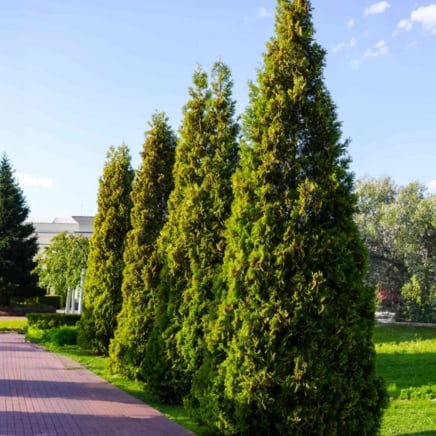
Green Giant
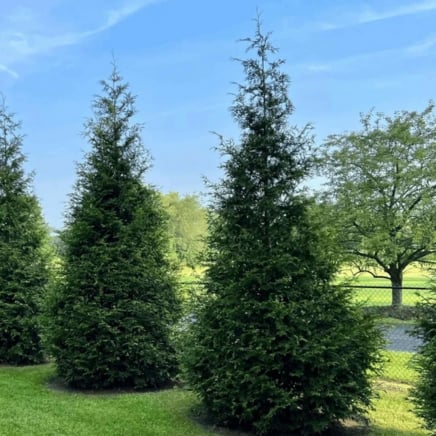
Emerald Green
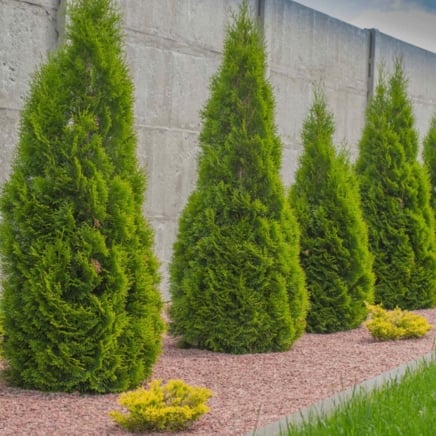
Arborvitae Watering Basics
The amount of water and the frequency you should apply it depend on a variety of factors affecting arborvitae growth. The tree’s age, the climate, and the garden are all factors that can influence how well it performs this year.
Shallow Roots
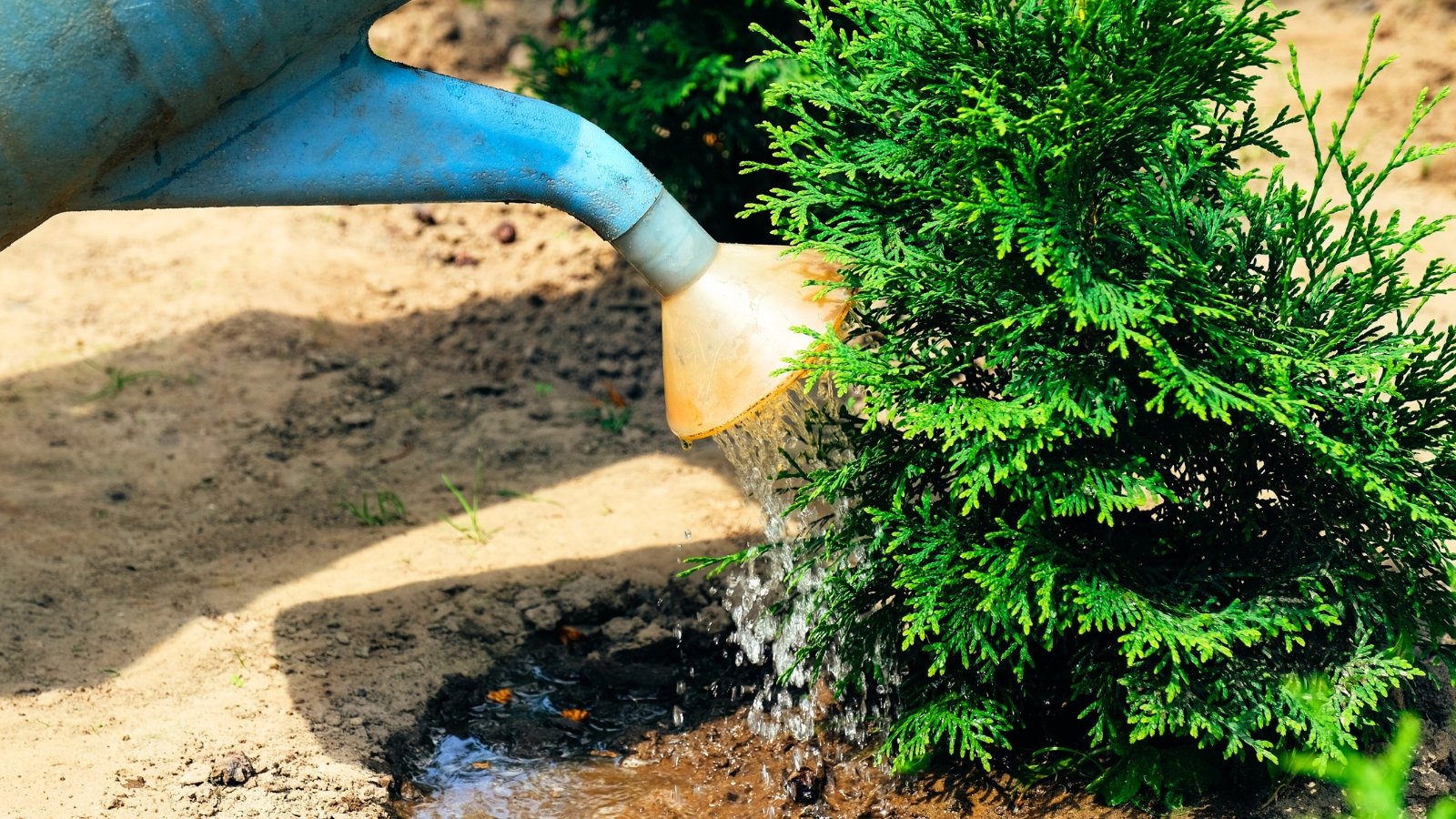 Shallow roots spread wide, thirsty for surface moisture.
Shallow roots spread wide, thirsty for surface moisture.You may think that arborvitae roots extend deep under the soil surface. However, they actually tend to stay near the surface! Most of the shallow roots extend horizontally in the top two feet of the soil. They use thin feeder roots to pull moisture from the ground up into their branches and leaves.
Young trees have especially shallow roots, as they are still establishing themselves in the landscape. The shallower their roots, the more moisture they’ll need to stay perky and vigorous.
Some varieties have shallower roots than others. Compact, dwarf cultivars don’t grow many roots, as they have a small trunk that requires less moisture and nutrients than full-size varieties.
New vs. Old Trees
 Bigger trees use more water but have larger root systems.
Bigger trees use more water but have larger root systems.How old or young your tree is will influence how much moisture it needs. Older trees need more irrigation than young ones, though they also have more roots to support themselves with. Young trees need less, yet they have a small root system that’ll benefit from extra irrigation.
The taller arborvitae trees grow, the more roots they form. These elaborate root systems allow them to pull in moisture from a large section of the ground. A mature and large arborvitae will need less watering than a fresh transplant. Young transplants need consistent moisture to thrive.
Don’t forget to irrigate old arborvitae specimens! Though they have more roots than young ones, they benefit from irrigation during droughts and extreme heat in spring and summer.
The Location
 Location and sun decide how thirsty a tree gets.
Location and sun decide how thirsty a tree gets.And finally, the location of your arborvitae will further influence how much and how often to water. Your local climate, the garden’s soil, and the sun exposure are all factors. Know your garden, its locations, and the sun exposures to find the best spot for your arborvitae.
This tree needs well-drained soil to thrive. Though it prefers consistent moisture, it’ll only thrive if excess moisture drains freely. Add compost to poor soils to improve their drainage, or consider choosing a different site where your tree will thrive.
Aside from the soil quality, the climate and sunlight levels will also decide how much water your arborvitae needs. Irrigate less often when natural rains keep the ground moist, and irrigate more often when summer heat and droughts are common.
Arborvitaes prefer full sun or partial shade in the garden. Shaded trees may need less water than fully exposed ones, but it’s important they receive enough sun. They need plenty of direct sunlight to stay dense, bushy, and full of healthy foliage. Ensure they receive three or more hours of daily direct sunlight for best results.
When to Water Arborvitae
How often to water an arborvitae depends on the age of the tree. Young specimens need consistent irrigation, while mature trees tolerate less frequent watering. Give your tree what it needs, and it’ll reward you with gorgeous cones, lush foliage, and decorative bark.
New Trees
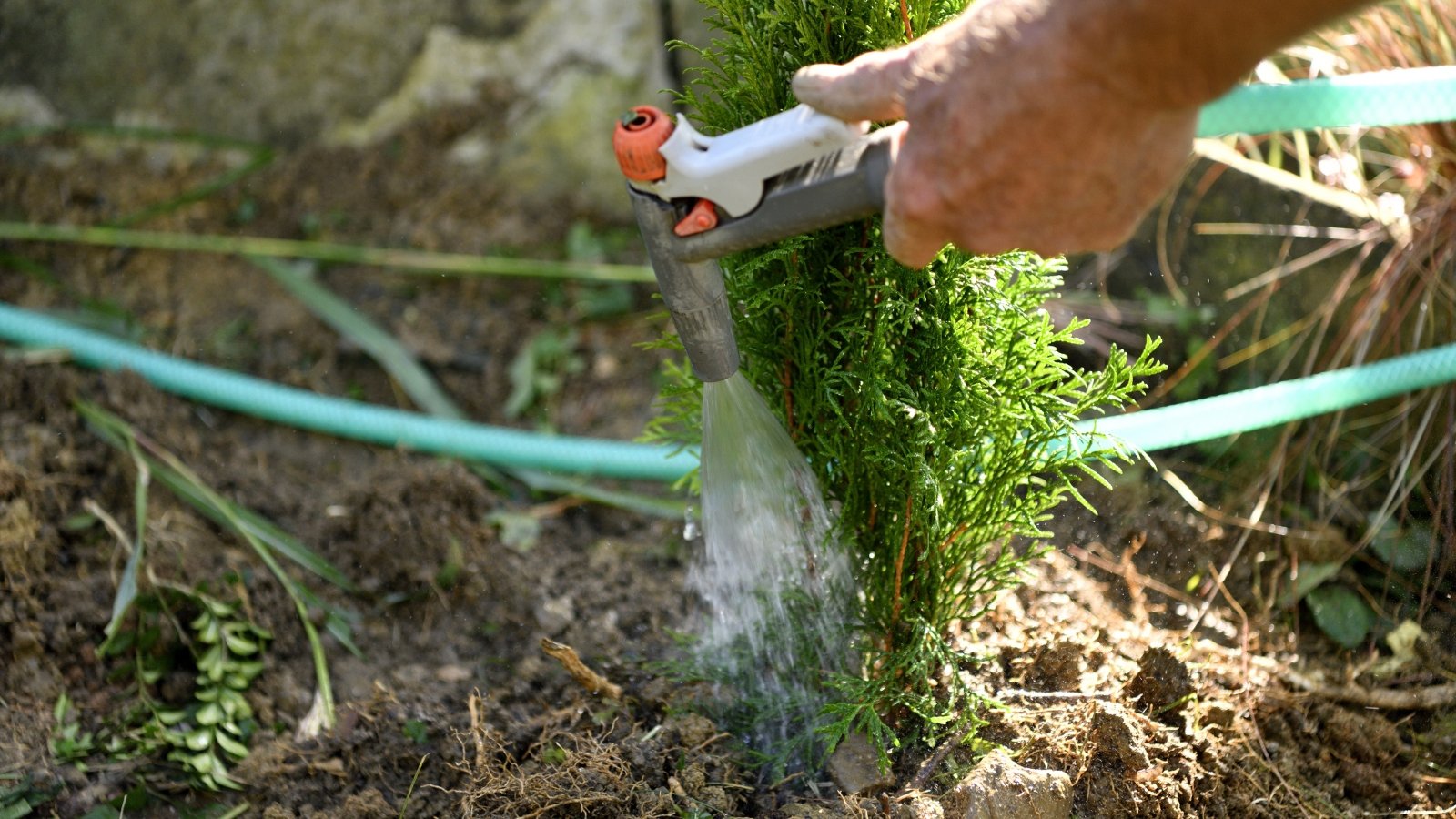 New transplants thrive with steady, but careful, moisture.
New transplants thrive with steady, but careful, moisture.A freshly transplanted arborvitae requires consistent moisture to thrive. You’ll want to water it weekly or twice weekly during the growing season to maintain a moist site. This frequency can change if there is natural rainfall or if the weather is cool and the dirt stays moist.
Overwatering can also harm a young arborvitae. Ensure you don’t overwater by checking the soil first before watering. If it feels dry, irrigate; if it’s already wet, don’t irrigate.
You may have to cut back on watering in fall, winter, and spring, depending on where you live. Cool, rainy seasons wet the ground, so you don’t have to! Pay attention to the weather to know if you should cut back on watering or do it more often.
Established Plantings
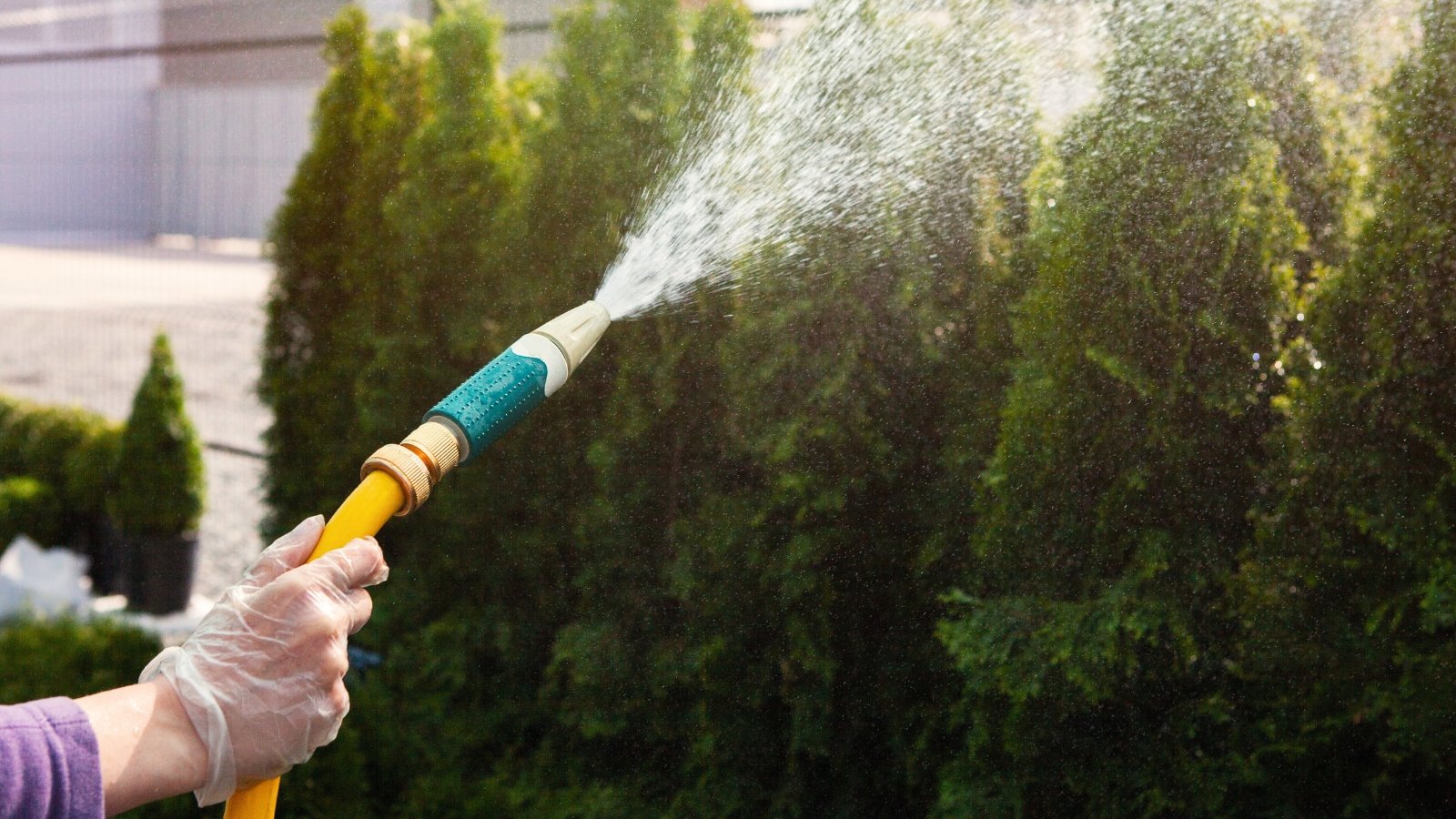 Mature plants store water deep in roots and limbs.
Mature plants store water deep in roots and limbs.Established, mature arborvitae specimens need lots of water to thrive! They collect it throughout the year and store it in their roots, limbs, and leaves. As they grow bigger, they need more moisture and nutrients than they did previously.
Established arborvitae plantings in regions like the Pacific Northwest or the East Coast may not need additional irrigation. Those in dry regions, like the Midwest or California, will definitely need extra water to thrive.
You’ll want to water mature arborvitae varieties about once every two or three weeks during the growing season. In especially dry sites, you may need to irrigate once a week to keep them happy and healthy.
How Much to Water Arborvitae
How you water arborvitae matters just as much as how often you do it. Different irrigation systems are more efficient at wetting the soil than others. Overhead sprinklers are easy to set up; however, drip and sprinkler systems may prove more efficient.
Check the Soil
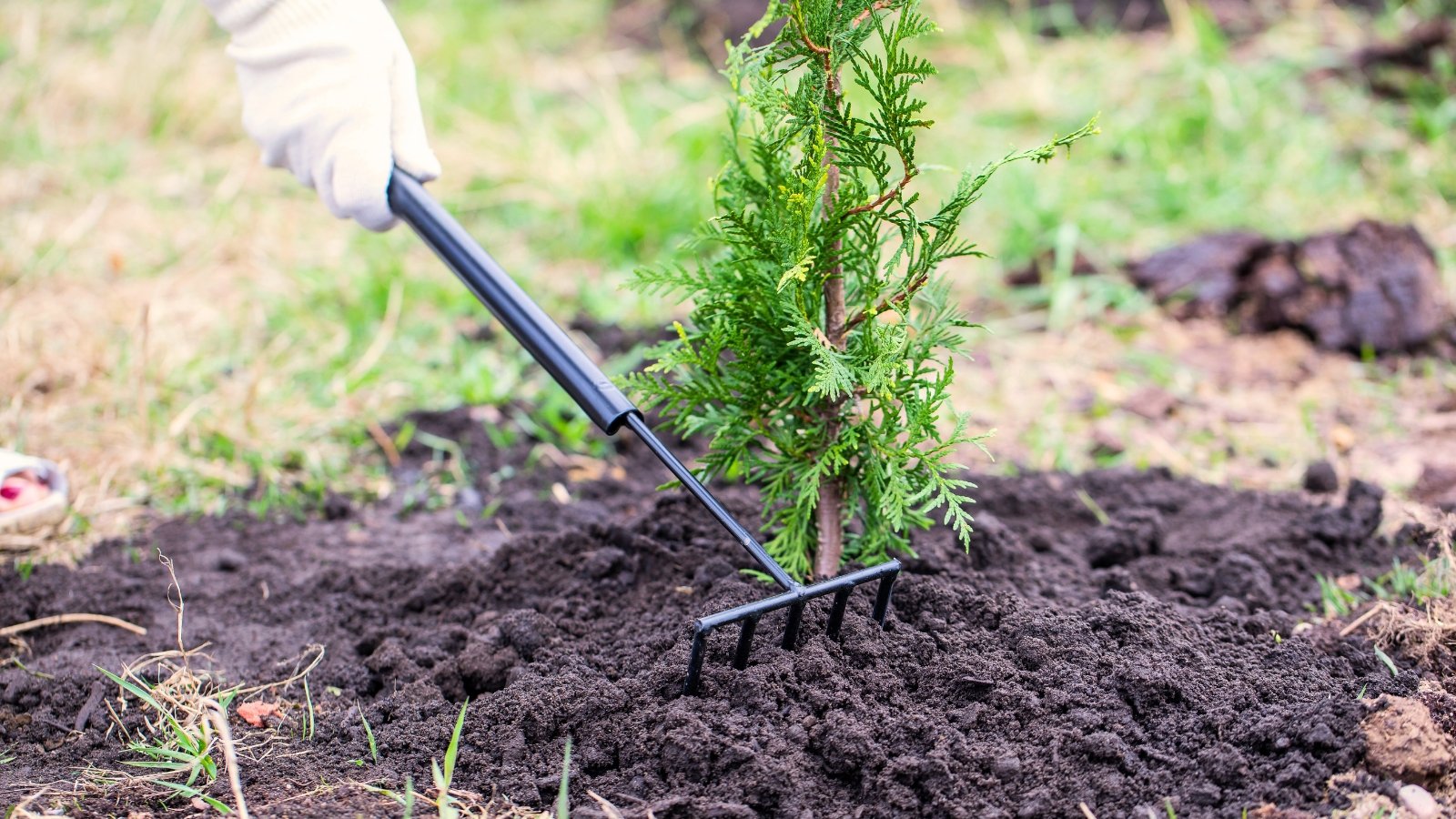 A quick soil check prevents overwatering and stress.
A quick soil check prevents overwatering and stress.Checking the soil before you water arborvitae will help you determine whether or not to irrigate. It’s a crucial step in the process! You can use your finger, though there are also probes and metal tools that work well.
Simply stick your finger in the dirt, pull it out, and see if any moist soil sticks to it. If it does stick to you, the soil is likely already moist enough for your arborvitae. If, however, dirt falls off and is dusty and crumbly, it may be a good idea to water the site.
If you can’t stick your finger in the soil, it’s too dry! Soil hardens without moisture, especially if it has lots of clay in it.
Deep vs. Shallow Watering
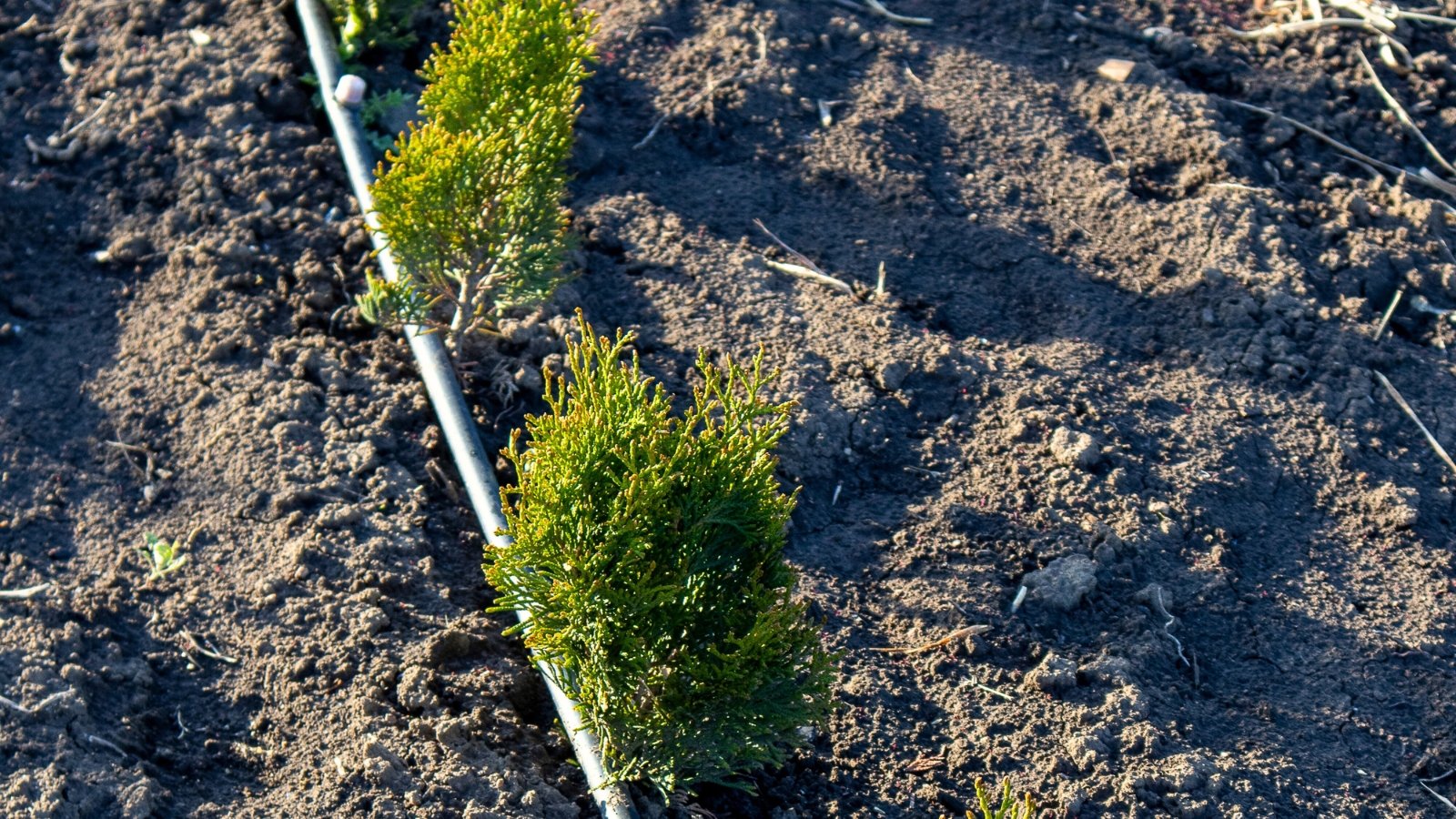 Giving roots a good drink encourages them to grow deeper.
Giving roots a good drink encourages them to grow deeper.It’s best to water arborvitae deeply and infrequently rather than shallowly and frequently. Shallow watering encourages shallow roots, and arborvitae trees already have shallow roots! Encourage healthy, vast root systems by adding plenty of water when you irrigate.
You have a few options for watering deeply. I like to leave a hose on a low trickle for an hour or longer. This lets the water seep into the ground and reach the roots where they need moisture most. You can set a hose on a timer, or just turn off the water after an hour or two goes by.
Another way to deliver large amounts of water to the root zone is with drip irrigation. These systems rely on tubes with holes and emitters that slowly drip water droplets onto the soil. Buy a kit, or make a DIY setup with parts from a local hydroponic or irrigation store.
Where to Water
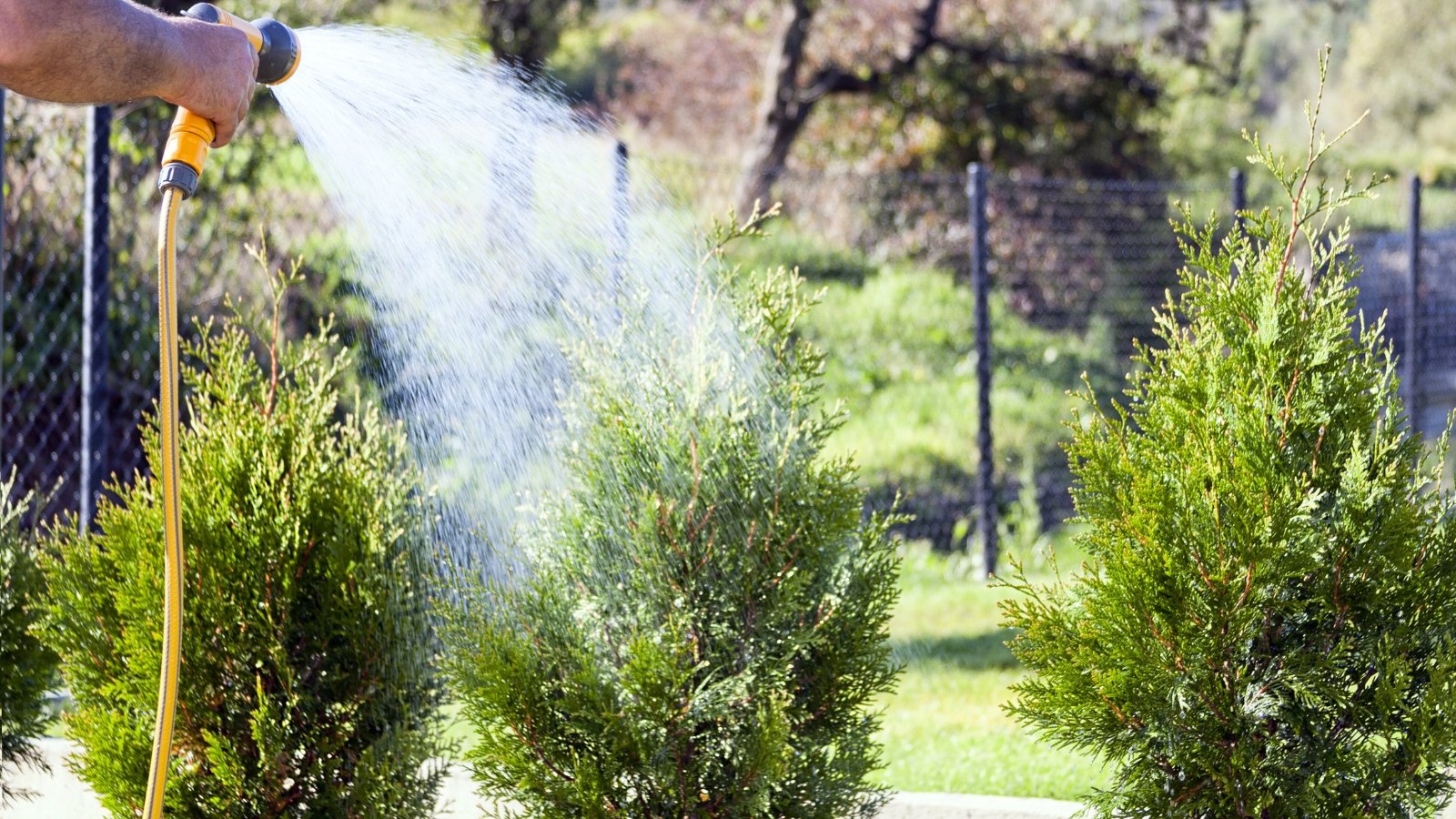 Proper watering means covering the entire root area thoroughly.
Proper watering means covering the entire root area thoroughly.When you water arborvitae, ensure that moisture soaks into the entire region underneath the tree’s canopy. These columnar species have wide-reaching roots. Avoid adding moisture in a small spot. To help it soak in, you can create a tree well for the water to pool.
These species need as much water as necessary to maintain consistent moisture levels. A mature arborvitae may use 100 or more gallons of water a day! Keep in mind that these conifers are much less drought-tolerant than similar evergreen trees.
So, now we see that watering arborvitae can be complicated! It depends on your garden, the type of arborvitae you have, and your local climate. Use proper techniques and a regular regimen, and you’ll have healthy arborvitaes in no time.
Key Takeaways
- Arborvitaes are not drought-tolerant! They’re ideal hedging specimens, though they require more moisture than most other conifers.
- Regular moisture is crucial for an arborvitae’s growing success. Irrigate as often as necessary to maintain moist, but not soggy, soil.
- Overwatering is just as detrimental as underwatering. Always check the soil before watering.
- Overhead sprinklers are simple to set up, but drip irrigation is more efficient in delivering moisture to the root zone.
Frequently Asked Questions
Yes, you can, if the tree needs irrigation. If the ground is sufficiently moist, don’t add extra irrigation until the soil dries a bit.
Fresh transplants have small root systems and need more frequent irrigation than mature specimens. Irrigate them weekly or more often during the growing season.
Sure! Why not? Watering at night will help moisture seep into the soil before it evaporates. Avoid wetting the leaves, as this encourages leafy diseases.


 5 days ago
16
5 days ago
16
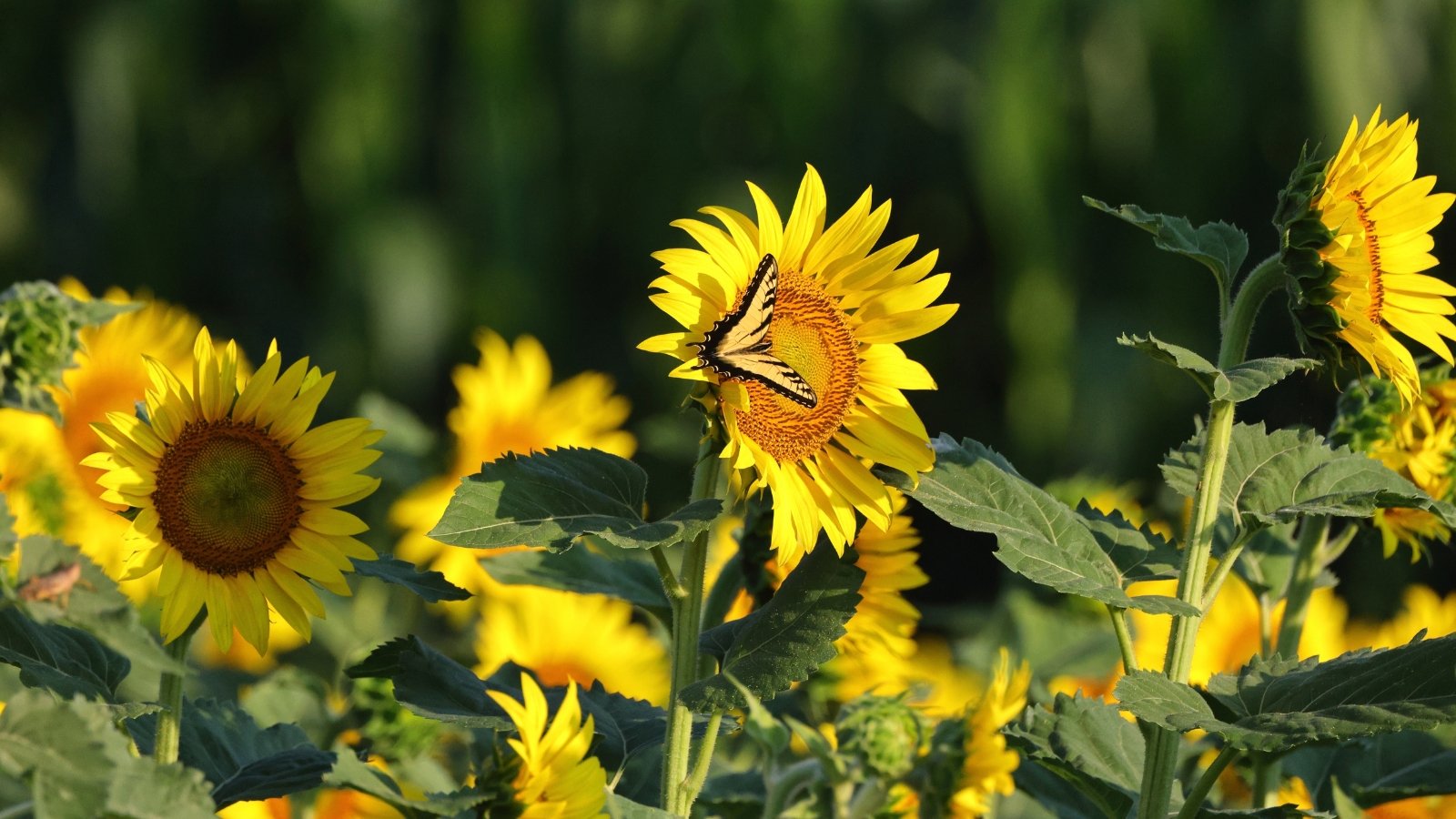
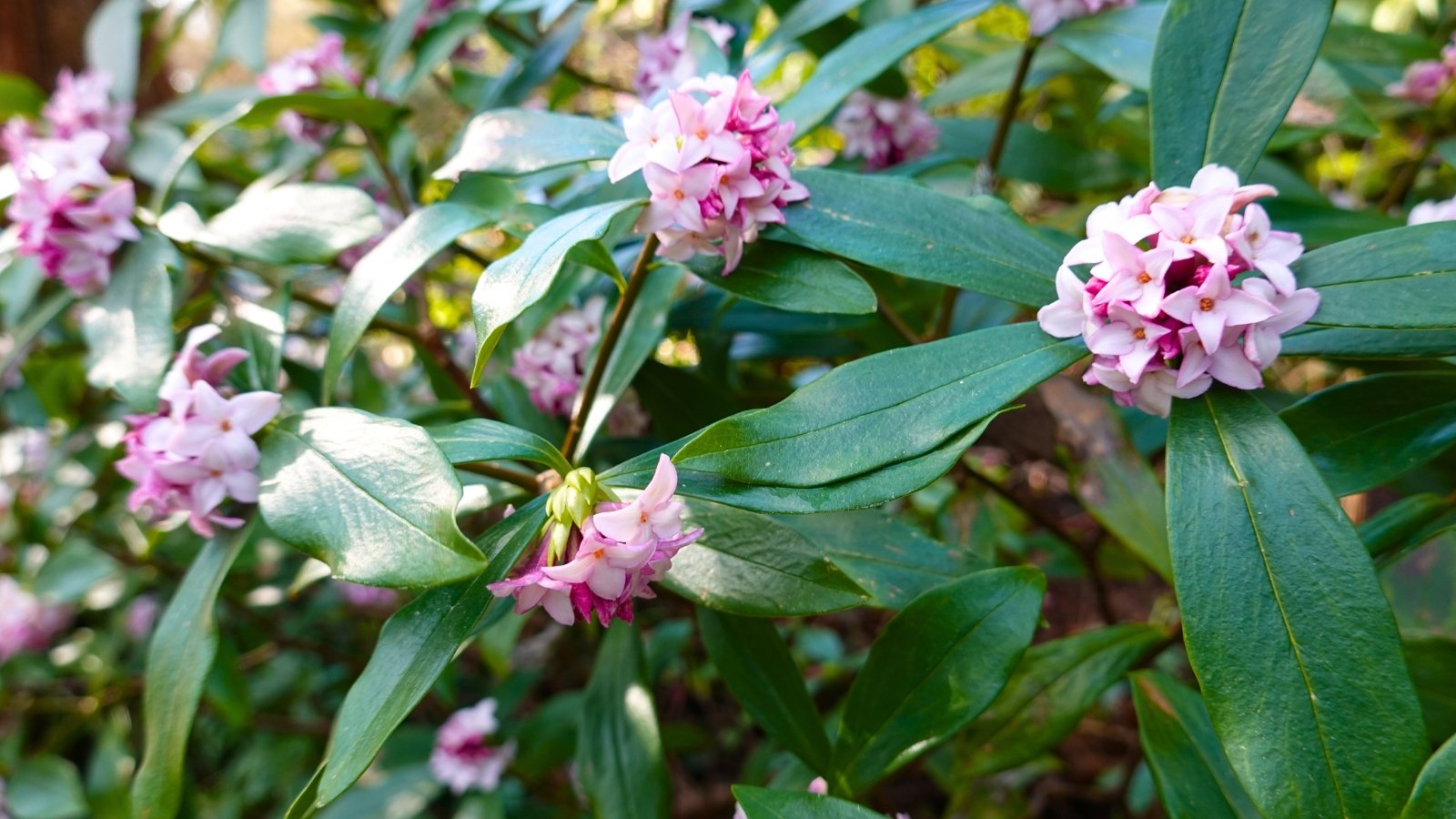

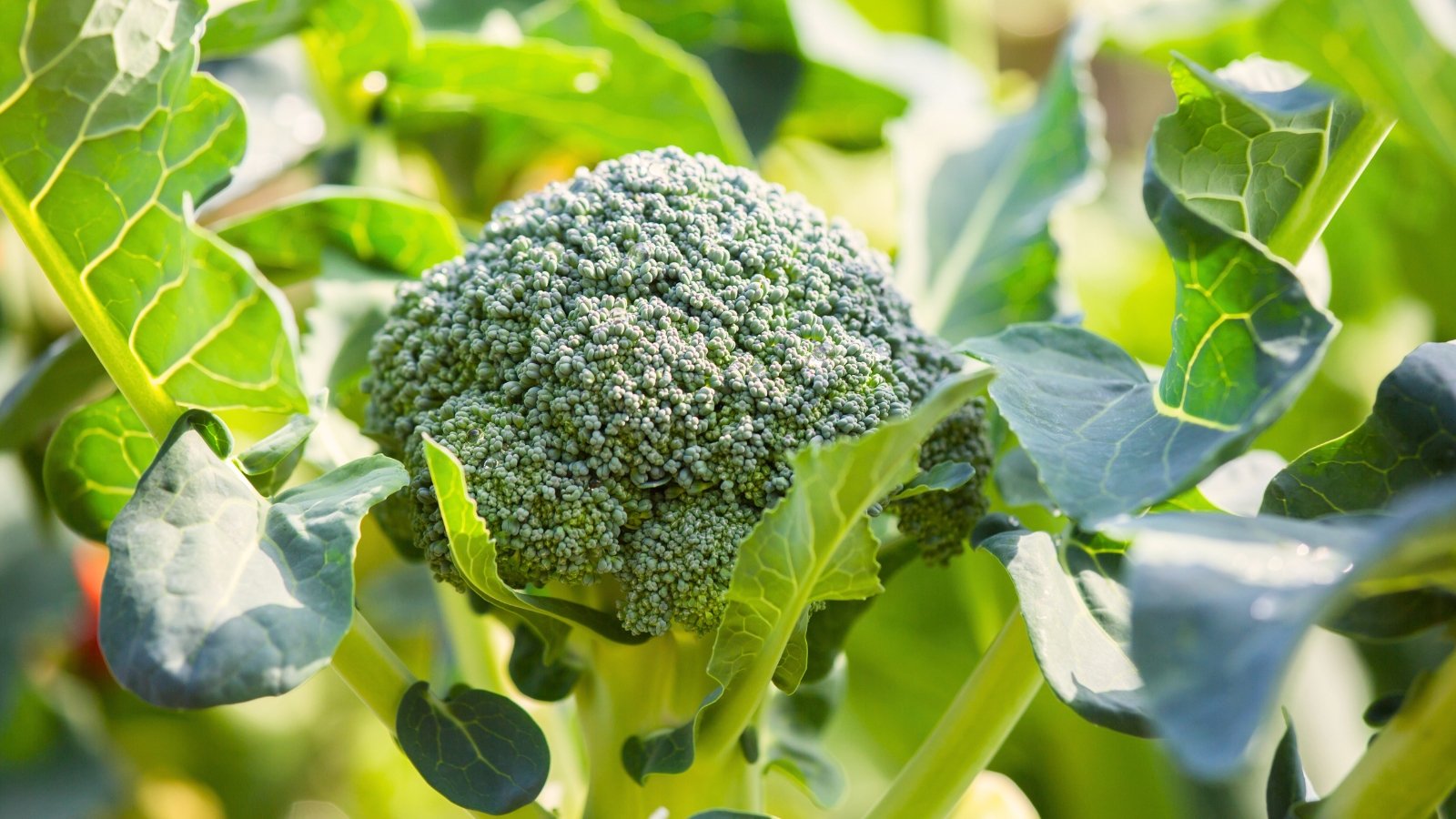

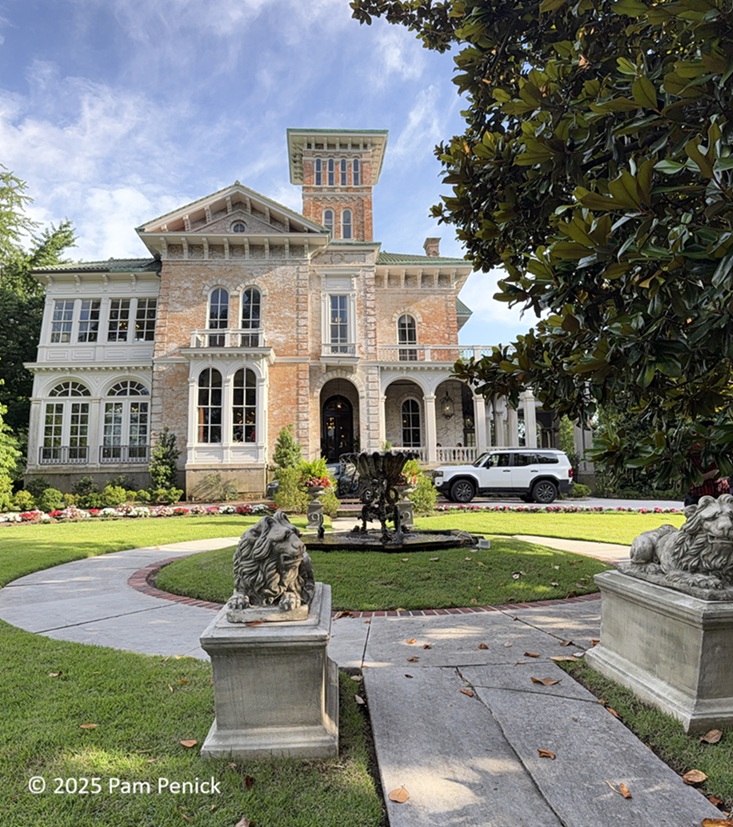















 English (US) ·
English (US) ·  French (CA) ·
French (CA) ·